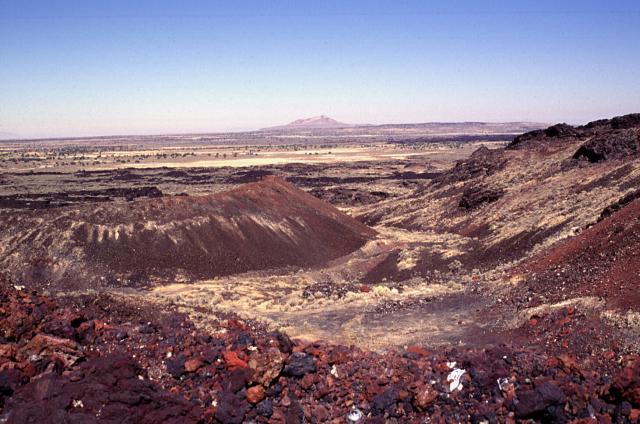U Researchers Discuss Discovery of Central Utah’s Active Volcanoes
The Black Rock Desert volcanic field in Millard County, Utah, 1996. (Photo by Lee Siebert | Smithsonian Institution)
March 18, 2021
Many people might think of Mount Saint Helens in Washington or Mount Vesuvius in Italy, but volcanoes have existed in Utah for millions of years. In Millard County, Utah, there is an area called the Black Rock Desert Volcanic Field which has been active for the last 6 million years. The Black Rock Desert is home to many types of volcanoes such as cinder cones, shield volcanoes, lava domes, explosion craters and even a caldera. They are still very much active to this day.
Kristine Pankow, a research professor and associate director at the University of Utah’s Seismograph Stations, said these volcanoes are not a danger as they last erupted 10,000 years ago. There is still heat and activity underneath the surface, but the general public should not worry about an active eruption anytime soon.
The area of the Black Rock Desert covers 7,000 square kilometers and is 145 kilometers long. The area is the youngest volcanic field in Utah and quite vast and barren. The desert is a host to numerous rocks such as basalt, andesite, dacite and rhyolite.
Maria Mesimeri, a postdoctoral research associate with the U’s Seismograph Stations, finds that although the town of Fillmore is 30 kilometers away from the volcanoes, they are in no danger because the area is not as highly active as Yellowstone. Mesimeri said the area is certainly not close enough to Salt Lake City, for anyone to worry about an eruption nearby.
In Sept. 2018 and April 2019, there were some earthquakes around this area, however, these quakes were very different from the big earthquake which hit Utah’s Wasatch Front in March 2020.
“These volcanoes are not newly discovered as we knew that there was something there but we didn’t know that it generates earthquakes because of the volcanic activity,” Mesimeri said.
What is unusual about the Black Rock Desert earthquakes is that they occurred 1.5 miles below the surface, while the Magna quake occurred at a depth of six miles below the surface.
Mesimeri and some other colleagues found the Black Rock desert quakes also had a lower frequency of seismic energy than the other Utah quakes which occurred over the years.
Research is being done to find out why the Black Rock Desert quakes are much shallower than other earthquakes in Utah. It’s possible that the transport of volcanic fluid within the rocks could have been the cause for this.
“My hypothesis is that these earthquakes are the result of fluid, magma or water, moving below the earth’s surface,” Pankow said.
The Wasatch Mountains form the eastern margin of the Basin and Range province which stretches west to the Sierra Nevada. This stretching is caused by plate tectonics which thins the crust. When this happens, heat rises up to the Earth’s interior and about 9,000 to 12,000 years ago, this heat resulted in an eruption of basalt lava.
“We are constantly monitoring the seismic activity in this region,” Mesimeri said.
Important research on earthquakes and seismic activity can be gathered by studying these volcanoes closely. Scientists have been a part of this exploration in the Black Rock Desert and continue to discover more about this area.
“From a public perspective, we all need to understand that we live on a dynamic planet, and temperature drives processes like weather and climate change on the surface, and also volcanic zones and even indirectly earthquakes from within the planet,” Pankow said.








Amali • Mar 20, 2021 at 9:07 pm
Well…its quite informative and me being someone who has visited Utah 3 times and seen its beauty, will make sure to visit Black Rock Dessert next time I m there…Well written Malinka…Keep up the good work